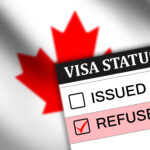
Canada boosts provincial immigration targets by 66% for 2026 — big opportunity for PNP applicants
The federal government has announced a major increase in Provincial Nominee Program (PNP) allocations for 2026, raising the planned number of permanent resident admissions through provincial streams to 91,500 — up from 55,000 in last year’s plan. The move represents a 66 percent increase in provincial immigration capacity and signals a strategic shift to rely more heavily on provinces to meet Canada’s labour and regional growth needs.
What changed and why it matters
After sharp cuts to PNP landing targets announced in late 2024 and early 2025, Ottawa has now reversed course by expanding provincial nomination allocations for 2026 (with a similar rise planned for 2027). The higher PNP target gives provinces substantially more flexibility to invite and nominate candidates who match local labour-market priorities — from health care and trades to agriculture and tech.
For applicants, the increase means more nomination opportunities and a clearer route to permanent residence for people who may not be competitive in federal Express Entry draws. Provincial nomination is especially valuable because an enhanced PNP nomination aligned with Express Entry adds 600 CRS points, effectively guaranteeing an Invitation to Apply for PR.
Who stands to benefit most
- Temporary residents already in Canada — work permit and study permit holders (including many PGWP holders) who have local ties and Canadian experience will likely benefit most, since provinces commonly prioritize in-province candidates.
- International graduates — candidates who studied and then worked in the nominating province are prime targets for many PNP streams.
- Employers and regional communities — the expanded allocations give employers better access to the foreign talent they need to fill skills gaps, and allow smaller or rural communities to recruit for specific local shortages.
- Lower-scoring applicants — those with lower Comprehensive Ranking System (CRS) scores, or without strong French proficiency, may now find provincial streams a more viable pathway than federal draws.
What provinces can now do
With larger nomination ceilings, provinces can:
- Re-open or expand targeted streams that had been paused in 2025.
- Prioritize specific occupations or sectors tied to local labour shortages.
- Offer more employer-driven nominations and regional retention initiatives.
- Accelerate selection of candidates already contributing to local economies.
Background: why allocations swung this year
In 2024 the federal government cut PNP landing targets sharply to reduce overall permanent resident admissions. That prompted many provinces to restrict streams, pause intake, or prioritize in-province applicants. Throughout 2025 several provinces successfully negotiated increased nomination allotments with Ottawa; the 2026 target broadly reflects those negotiated increases and a policy pivot to use provincial programs to deliver more regionalized and needs-driven immigration.
Practical takeaways for candidates
- Review provincial priorities and target provinces where your occupation and experience match demand.
- If you are on a study or work permit in Canada, strengthen local ties (employment, community involvement, language) — provinces often favour in-province candidates.
- Consider applying for Express Entry and also submit an Expression of Interest (EOI) or profile with the provinces you’re eligible for. A provincial nomination will add 600 CRS points.
- Keep documents current (language tests, educational credentials, employer letters) to be ready for fast-moving provincial draws.
For a consultation about Immigration options, reach out to the CAD IMMIGRATION today!





